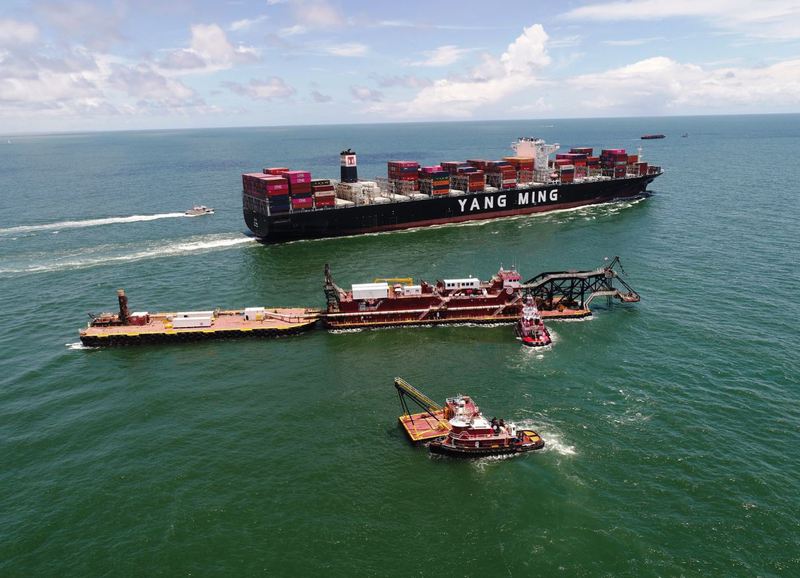New funding to address “significant backlog” in US dredging

Caption: Great Lakes Dredge & Dock carries out work in Charleston Harbor, US (Photo Credit: GLDD)
In late 2020, bill H.R. 7575 passed in congress, freeing up some USD10 billion of funding previously locked away in the US’ Harbor Maintenance Trust Fund (HMTF), as part of congress’ year-end budget deal. The move will allow the US Army Corps of Engineers (USACE) – which funds 95% of all dredging operations in the United States – to begin work on a considerable backlog of dredging operations, potentially increasing the draft and improving access at several US ports.
Further, the bill has several provisions which would prioritise the expansion of existing infrastructure. In particular, a minimum percentage of the fund is dedicated for use by “emerging harbours”, those handling less than 1 million tons of cargo annually. The bill also expands the minimum share of HMTF funding allocated for Great Lakes navigation routes, to 12% of the total.
In an effort to respond to the east coast’s onslaught of climate-change related weather events, H.R. 7575 stipulates that USACE “...must establish a pilot program to address the flood and storm damage risk reduction needs of economically disadvantaged communities,” and “...may also construct projects for flood and coastal storm risk management in areas that have had been impacted by repetitive flooding.”
The bill is being regarded as something of a stimulus in the wake of the Covid-19 pandemic; but the US’ Jones-Act dredging fleet is beefing up to match. In September, Manson Construction Co. contracted Keppel AmFELS, in Brownsville, Texas, to build the largest Jones-Act TSHD ever, with a length of 128m and a beam of 25m. This, alongside Keppel AmFELS other major signing, the first ever Jones Act Wind Turbine Installation Vessel (WTIV) for Dominion Energy, implies that at both the federal and enterprise level, the US is laying the groundwork for a massive revitalisation of its coastlines.
In a statement issued to CEDA Industry News, the American Association of Port Authorities (AAPA) welcomed the changes. “AAPA is pleased that, late last year, Congress authorised for the first-time full spending down of the Harbor Maintenance Trust Fund (HMTF). Industry needs access to the more than [USD] 9.3 billion balance that has been paid into the fund.
“Spending the HMTF will allow the Army Corp of Engineers to address the significant backlog in federal navigation maintenance work needed throughout the country. This will improve America’s economy, infrastructure, and competitiveness.
“AAPA’s advocacy work continues as Congress must next pass appropriation legislation which will finally unlock these funds.”
While the advice given in this editorial content has been developed using the best information available, it is intended purely as guidance to be used at the user’s own risk. No responsibility is accepted by CEDA or by the Intent Communications Ltd or by any person, firm, corporation or organisation who or which has been in any way concerned with the furnishing of information or data, the compilation, publication or any translation, supply or sale of this Guidance for the accuracy of any information or advice given herein or for any omission herefrom or from any consequences whatsoever resulting directly or indirectly from compliance with or adoption of guidance contained therein even if caused by a failure to exercise reasonable care.